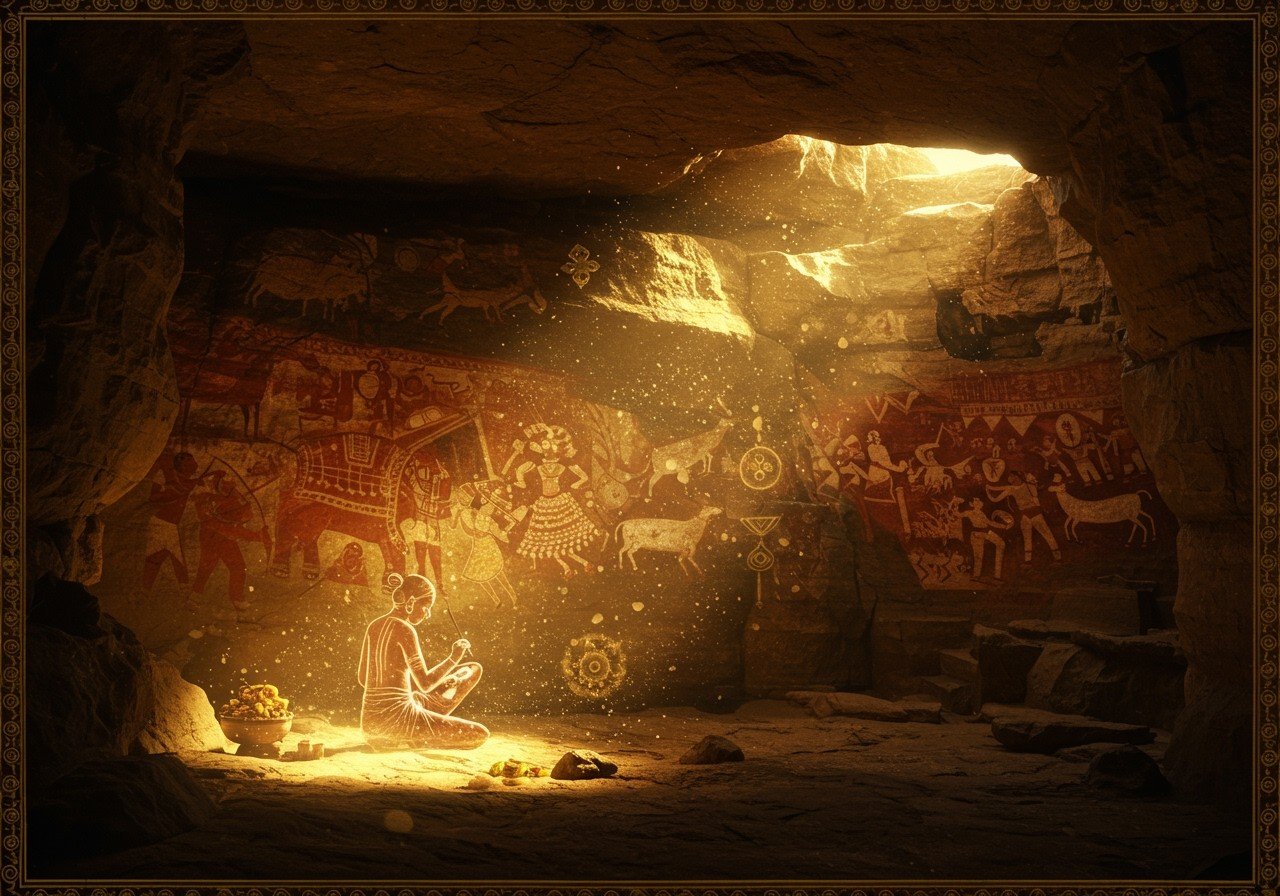
Nestled in the Raisen district of Madhya Pradesh, India, the Bhimbetka cave paintings stand as a testament to the dawn of human artistic expression in South Asia. Dating back to the Paleolithic and Mesolithic periods, these paintings offer a unique glimpse into the lives of early humans.
Historical Significance
The Bhimbetka rock shelters, over 750 in number, house a treasure trove of prehistoric art. Discovered in 1957 by archaeologist V.S. Wakankar, Bhimbetka was recognized as a UNESCO World Heritage site in 2003. The rock art, spanning from the Upper Paleolithic to the Medieval era, showcases scenes of hunting, dancing, daily life, animals, and humans in various colors, offering crucial insights into early human life, evolution, and migration.
Cultural Significance
The Bhimbetka cave paintings hold immense cultural importance. They reflect the social and spiritual practices of ancient communities, including rituals and daily activities. Communal scenes, such as hunting parties and tribal dances, illustrate the collective nature of early societies. Certain motifs, like animals and geometric patterns, possess symbolic meanings, offering glimpses into the spiritual beliefs and religious practices of prehistoric communities.
Artistic Techniques and Styles
The Bhimbetka cave paintings demonstrate a diverse range of artistic techniques and styles. Ancient artists employed natural pigments like red ochre, hematite, and white clay, applying them through methods like finger painting, brush strokes, and engraving. The art evolved over time, from simple linear depictions to complex illustrations, some even showcasing perspective and motion. The choice of pigments and the rock texture influenced the artistic style. The paintings feature a variety of themes, including animals, human activities, and abstract symbols, placing them within the broader context of prehistoric art worldwide.
Archaeological Discoveries
Archaeological findings at Bhimbetka provide a deeper understanding of ancient human life. Discoveries of stone tools, pottery, and other artifacts reveal early technological advancements. This evidence helps reconstruct the timeline of human occupation at Bhimbetka, revealing continuous habitation for thousands of years. Interdisciplinary research, encompassing archaeology, anthropology, and geology, continues to uncover the secrets of Bhimbetka.
Poojn.in: Connecting You with India’s Heritage
Poojn.in, India’s leading online store for cultural and religious goods, offers a wide selection of products to help you connect with India’s rich heritage. As you explore the wonders of ancient art like the Bhimbetka cave paintings, consider enhancing your spiritual journey with authentic puja items from Poojn.in. Our offerings include:
- Sacred Malas: Enhance your meditation and spiritual practices with our collection of Tulsi and Bel malas. These are crafted with care and respect for tradition, using high-quality materials.
- Spiritual Statues and Idols: Bring reverence into your home with our beautifully crafted statues and idols, perfect for creating a sacred space for prayer and reflection. We offer a wide selection depicting various deities, crafted from materials like marble dust.
Visit poojn.in today to discover a wide array of products that connect you with India’s spiritual traditions.
Conclusion
The Bhimbetka cave paintings are more than just ancient art; they are a portal to the past, illuminating the lives and culture of early humans in India. These paintings underscore the historical, cultural, and artistic achievements of our ancestors, reminding us of the richness of Indian heritage. By appreciating the Bhimbetka cave paintings, we connect with our roots and honor the traditions that have shaped our history.
Explore additional articles on Indian temples and historical sites on poojn.in:


